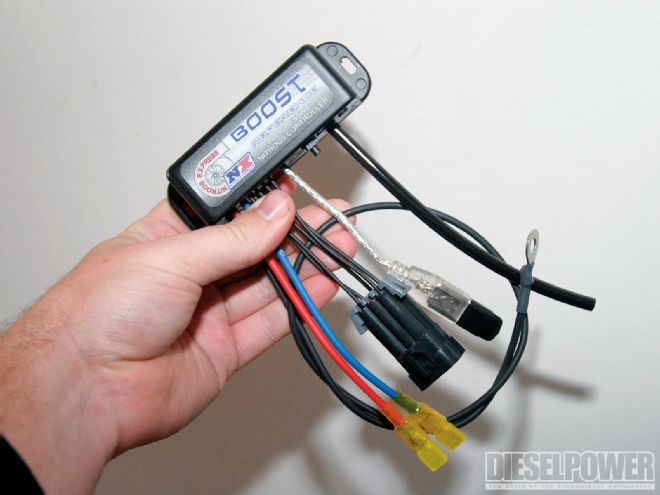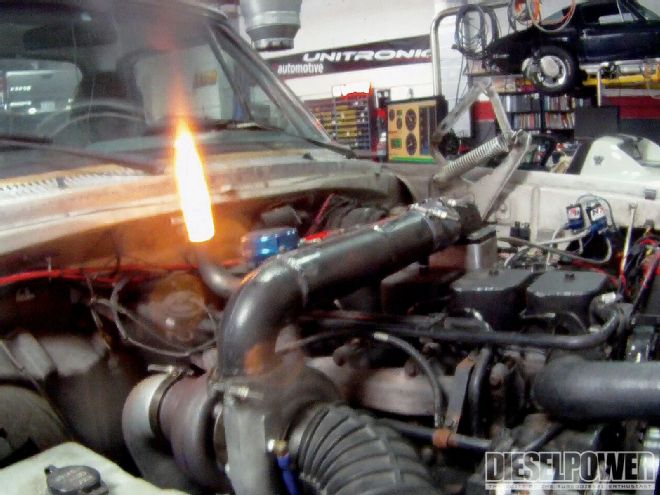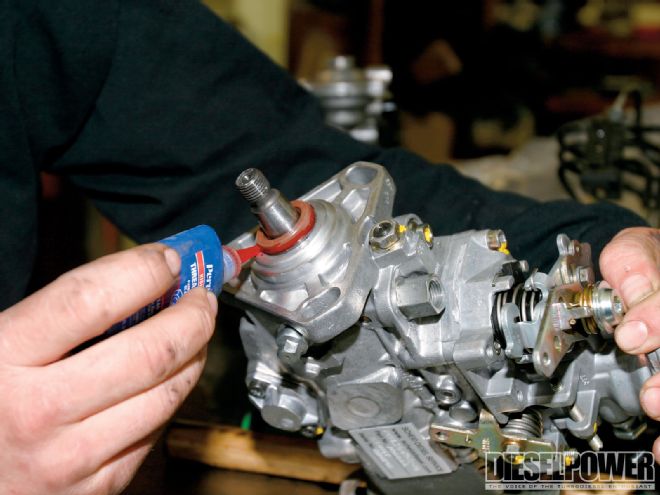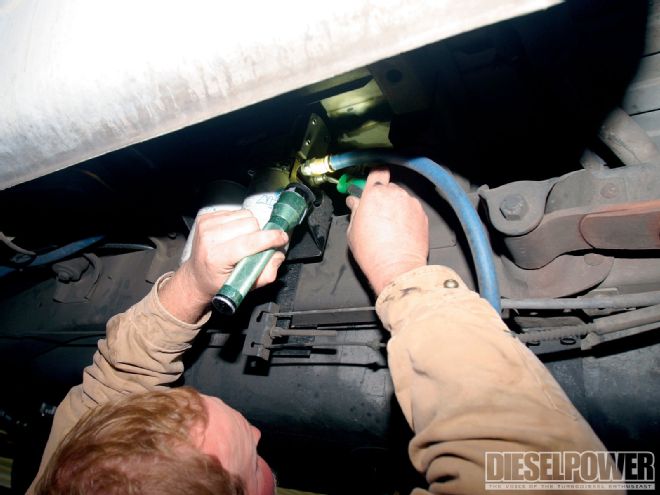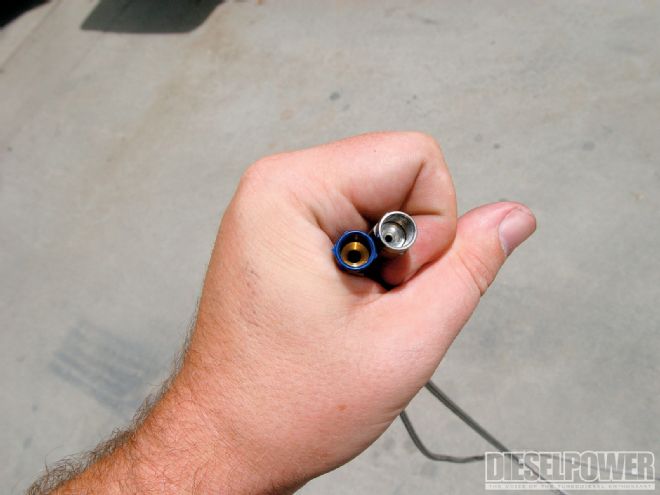The last time we hit the dyno with Project Rust Bucket, we made 301 hp at the wheels, and 448 hp with nitrous. At that time, it had a High Tech Turbo 60mm compressor upgrade, 3-inch downpipe, Carter electric lift pump, and stock head bolts. Since then, we've installed ARP head studs and O-ringed the cylinder head, fitted a 62/65/14 wastegated S300 turbocharger and 4-inch downpipe, and upgraded our fuel system with an AirDog II 150-gph pump. We expected our new dyno numbers to be in the 330 to 350hp range. Our first hit on the dyno resulted in 308 hp-a mere 7hp gain. After fiddling with the throttle a bit more to gain full travel, we saw 318 hp, but that was about it. A test with both wastegates open (allowing only 37 psi instead of 59 psi of boost) showed that the truck only dropped about 20 hp, indicating that without an intercooler, more boost wasn't increasing our air density much-it was just making the air hotter.

| 1989 Dodge D250 Ve Pump Nitrous System dyno Test
Major Fueling: 14mm Scheid VE Pump
Rather than fool around with more non-intercooled tuning, we decided to step up to the plate and swap in a Scheid Diesel-built VE pump with a 14mm head and rotor with the help of Brown's Diesel in Riverdale, California. In addition to the 14mm head upgrade, the governor, flywheel, and fulcrum levers were modified to defuel the pump at a faster rate than normal to keep the idle speed down. All these modifications led to an injection pump that outflowed the stocker by a hefty margin. While our modified 12mm VE produced about 220 cc of fuel turned all the way up, the Scheid VE flowed 370 cc, a 70 percent increase. Now we had enough fuel to support 700 hp at the wheels-we just needed the air.
Major Air: NX Dual-Stage Nitrous Kit
Since more boost wasn't helping provide us with more oxygen, we installed an NXD4000 two-stage kit from Nitrous Express, complete with a high-flow bottle, -6AN feed line, and 0.157-inch solenoids and nozzles. Unless the truck is severely overfueled, most nitrous kits on the market will add roughly 100 to 200 extra horsepower, even if the nitrous is delivered in multiple stages. When compared to the NX kit, which can add 300 to 500 hp, it was clear which unit we should buy. And, considering our truck doesn't have an intercooler, the nitrous would have an immense cooling effect on the intake charge as well.

| The cornerstone of our attempt to crack 500 hp was a Scheid Diesel-built 14mm VE pump, which could supply 370 cc of fuel at 2,500rpm-enough to support about 600 to 700 rear-wheel horsepower.
Major Dyno Numbers: It all comes together
This was the moment we'd been waiting for for more than two years. The O-ringed head and ARP studs were ready to seal the cylinder pressure, we had big fuel, big nitrous, and enough wastegating to avoid overspeeding our turbo. Our first run on the rollers yielded 356 hp at the wheels on fuel only-an increase of 38 hp from just the Scheid pump alone. But that was only half the story. Our Cummins was so overfueled that we completely blacked-out the shop at Brown's Diesel, which meant it was time for more air-and that meant hitting the nitrous. With no bottle heater, we knew we'd need to go pretty big on the jetting to get the power numbers we wanted.
Our first run was with a 0.073-inch nitrous jet, which put the engine at an even 400 hp. Our next run was with a 0.073-inch and a 0.099-inch jet, which made 460 hp-a new best. Our final run was with a 0.099-inch and 0.135-inch jet, which yielded 514 hp! At that point, we decided to call it good enough, as our truck was still running, and we didn't want to risk breaking down 200 miles from home. We loaded up the truck, thanked Brown's for its help, and drove back to Los Angeles.
What's Next?
One of our major goals of the project was to break the 500hp barrier, and now that we've done that, it's time to hit the dragstrip and see how that power applies to the ground. We expect to run mid-12s in the quarter-mile, which is pretty quick for any diesel, but even better for a 20-year-old rig using old-school technology.
